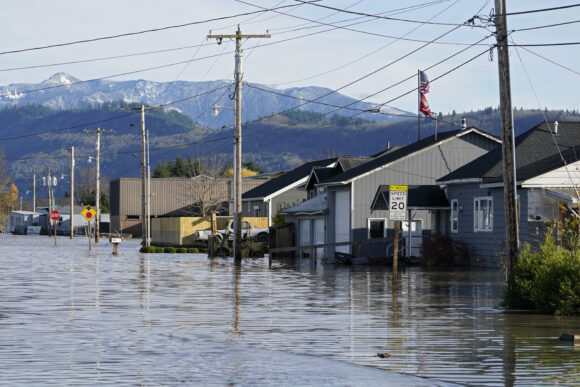Original article can be found HERE.

Starting April 1, property owners in low-lying areas across the country will see their premiums increase when they renew their flood insurance policies, thanks to the federal government’s new flood-risk rating system.
Some policyholders could see premiums drop under Risk Rating 2.0, which officials have said is designed to be more equitable and accurate, reflecting the use of more precise computer flood-modeling techniques.
“Risk Rating 2.0 is not just a minor improvement, but a transformational leap forward,” the Federal Emergency Management Agency said in a statement. “Risk Rating 2.0 enables FEMA to set rates that are fairer and ensures rate increases and decreases are both equitable.”
The new rating system took effect for new National Flood Insurance Program policies last October, but kicks in April 1 for renewals. Many homeowner groups and elected officials have complained that the new system will mean much higher premiums for millions of people.
In North Carolina, 74% of policyholders could see an increase, starting Friday, according to local news reports. But about 26% could see a major decrease in costs.
“Now the riskiest properties are going to have to foot the bill themselves,” Quote Wizard’s senior analyst, Nick VinZant, told WWAY TV news in Wilmington, North Carolina. “The high house on the hill that never floods is no longer paying for the beachfront mansion. And the beachfront mansion is going to have to pay a lot more.”
Flood experts have said forcing affluent waterfront properties to finally pay a more realistic price on insurance is a good thing, and can discourage more building in flood-prone areas.
In some parts of Florida, the cost of flood insurance is expected to eventually increase by 1,000%, the New York Times recently reported after analyzing NFIP data. Until recently, a Tampa homeowner paid about $480 a year for a flood policy. That could eventually top $7,000 a year after annual increases.
The NFIP was established by Congress in 1968 and is the primary provider of flood coverage, which isn’t widely available from private insurers. Aside from revenue from premiums, NFIP also can borrow money from the federal coffers to cover claims. The program now insures more than 4 million homes around the U.S., but critics have charged that it has subsidized coastal building for well-to-do property owners, and was bad public policy.
FEMA said in 2019 that it would adopt the new rating system, but it was delayed by President Trump’s administration. It has now finally become reality, just in time to reflect stronger storms, rising seas and more rainfall in some parts of the country, advocates have said.
“With a rapidly escalating threat of natural disasters, Risk Rating 2.0 is a much needed and timely change,” Laura Lightbody of the Pew Charitable Trusts, told the newspaper. Higher insurance costs are “a reflection of our new, wet reality,” she said.
Premium increases are limited by federal law to no more than 18% per year. So with Risk Rating 2.0, about 2.4 million homes will see rates increase by moderate amounts this year, the Times has reported. Another 627,000 should see premiums drop after the April 1 renewals.
An estimated 330,000 homes could see premiums climb by a few hundred dollars this year, and about 25,000 homeowners could see costs rise by more than $1,200 in the first year, with more increases later, FEMA has said.

